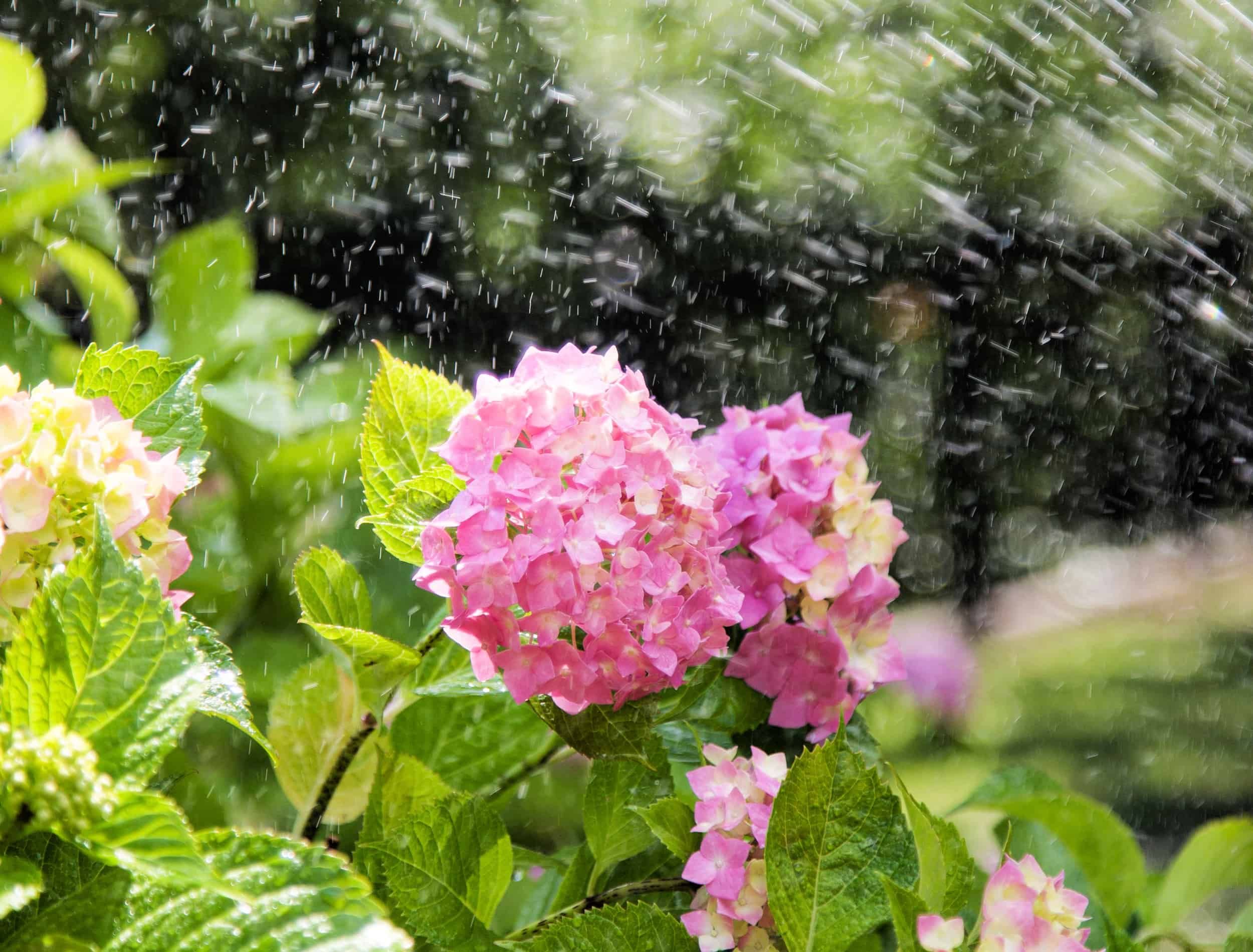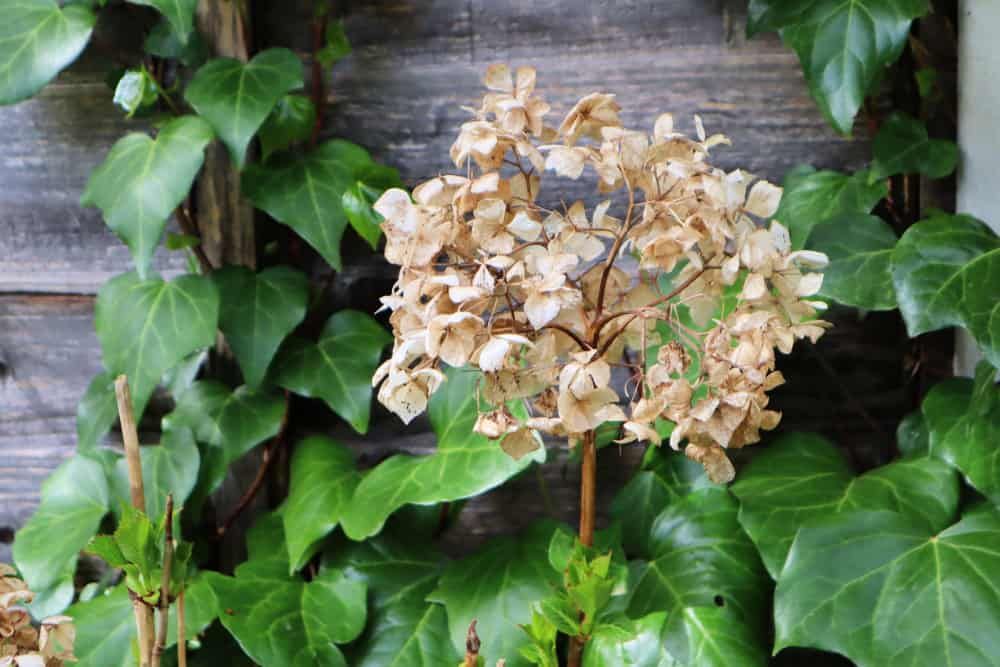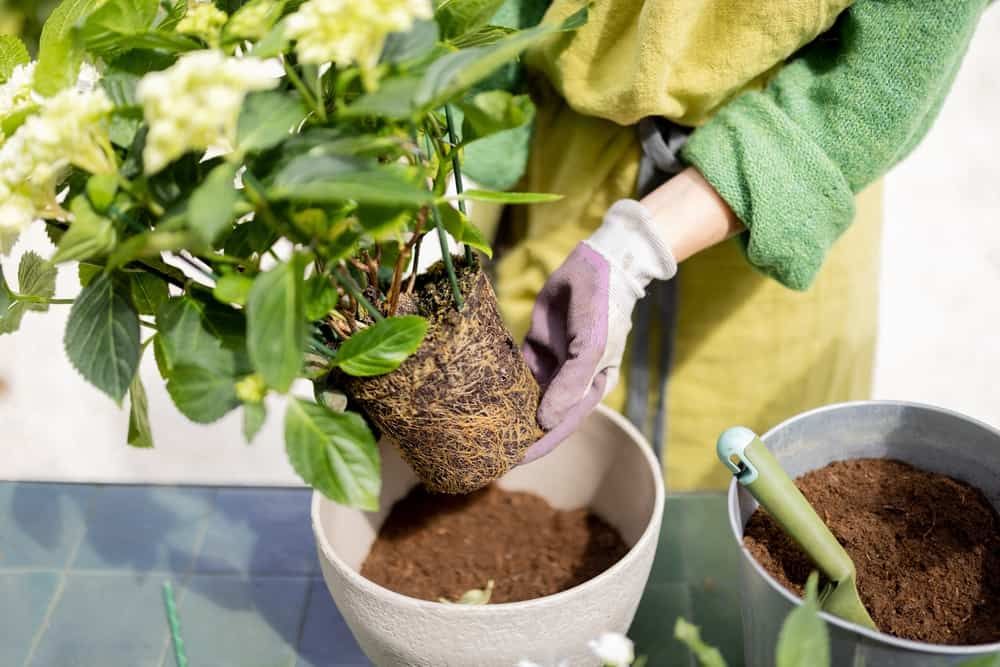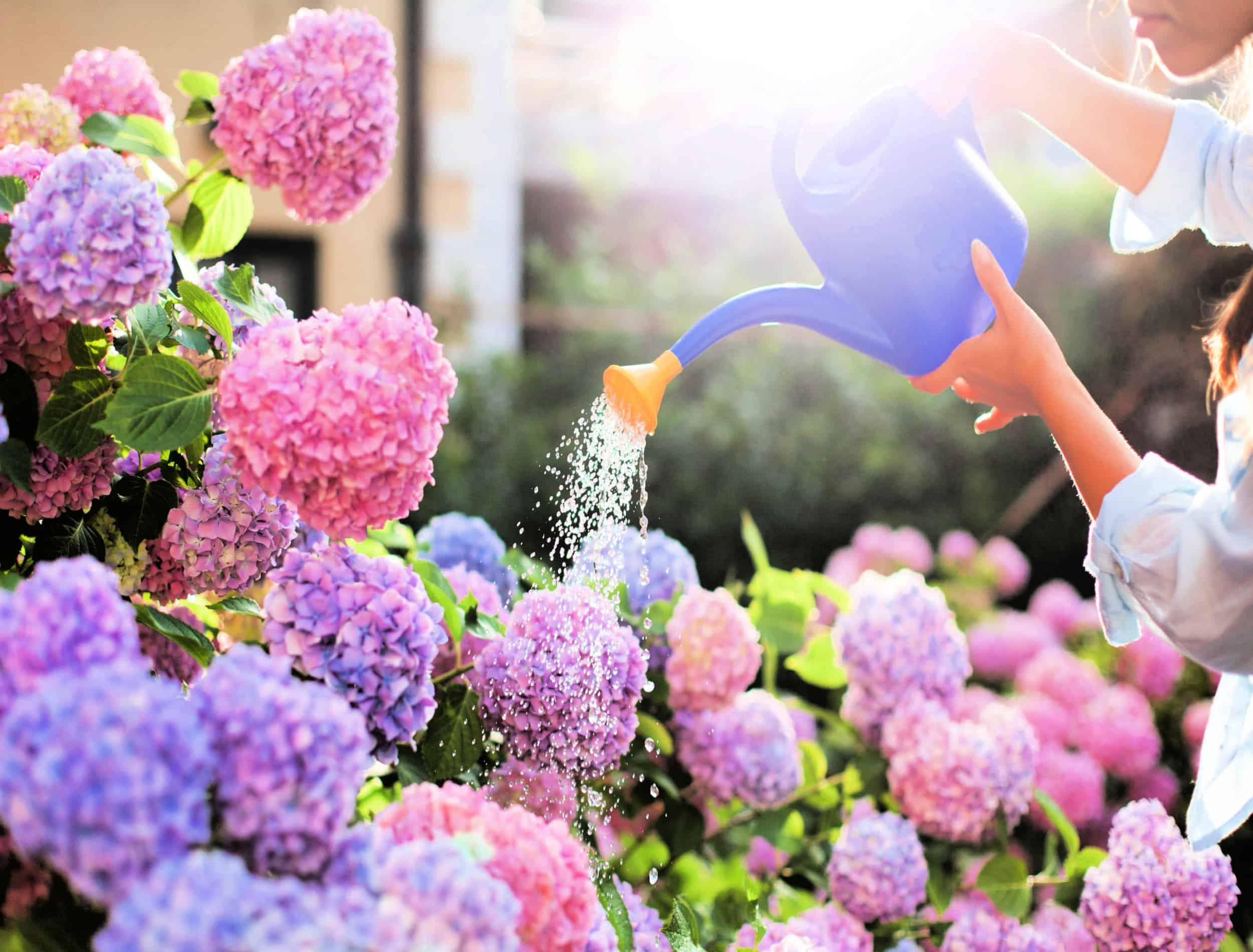Hydrangea plants are eye-catching, colorful perennials that add plenty of visual interest to your garden. Like many shrubs, these fast-growing plants require the proper time and attention to grow and develop. Fortunately, they are generally easy to care for and thrive in the right conditions.
Speaking of care conditions, hydrangeas like lots of water, but overwatering is still possible. And if your plant is suddenly suffering, it's time to take action before it's too late. Below, you'll discover the signs of overwatering and what you can do to save your hydrangea plants if this happens. Better yet, you'll learn how to prevent the issue from occurring again.
Signs You Are Overwatering Your Plant
Image credits: Michelle Le Grand via Shutterstock
Wet soil is the most glaring sign you have been overwatering your hydrangea plants. These perennials like water, but they don't like to be soaked, so sopping soil isn't a good sign.
You may also notice sparse blooms, buds that don't open, and yellow leaves when you have overwatered your hydrangeas. Browning and dropping leaves signal root rot, so it's important to check all parts of your plant. Be on the look out for yellow leaves so you can save your plant before it's too late!
With that said, all of these signs are similar to symptoms of underwatering, so it's crucial to consider how often you water the plant and the weather conditions in your area. If you suspect your plants are suffering from overwatering, it's time to check the root system. If you find mushy black roots, the plant likely has root rot and is suffering from overwatering.
If your hydrangea plants aren't blooming at all, they may be lacking sunlight, proper pruning techniques, or high-quality soil.
Can You Save Your Hydrangeas?
Image credits: RossHelen via Shutterstock
If you've spotted the signs of overwatering, you'll be happy to hear that your hydrangea plants can recover. Though you can technically allow the plant time to dry out before you water it again, this isn't the most sure-fire way to help your plant survive. So, what's the best way to save your overwatered hydrangeas?
First, you should remove the plant from the ground or its pot using a garden fork or trowel. After you remove the plant from the soil, clear as much dirt as you can from the roots. You can also rinse them under water so you can really see what you're working with.
Then, inspect the roots. The plant is likely past saving if they are all brown and mushy, though you can try propagating cuttings. If you find some healthy roots, you can trim away the dead roots using sterilized scissors. You should cut above the infected area to ensure the roots do not continue to rot.
You can also spray a mixture of one tablespoon hydrogen peroxide and one cup of water onto the roots to control fungus and bacteria. Finally, allow the roots to dry overnight. The next day, replant your hydrangeas in fresh potting soil. Use well-draining soil, and remember to remove any old soil from the area as it may be infected with bacteria or fungus.
How to Avoid Overwatering
Image credits: Marina Andrejchenko via Shutterstock
Proper watering techniques are the best way to avoid overwatering hydrangea plants and any other plants you may have! Remember that hydrangeas also commonly suffer from underwatering, so it's essential to keep the soil moist but never wet or soaked.
Water deeply and check the moisture levels of the soil using your finger -- if you feel that the soil is dry, there's a good chance it's time to water! Also, watering in the morning ensures the water doesn't evaporate too quickly while still allowing your plant to dry up before nightfall. Avoid watering the leaves, which can leave the plant susceptible to diseases.
The location of your hydrangea plants can also impact their need for water. Remember that some varieties prefer sun while others like partial shade. The more sun your plant gets, the more it will need watering as the soil will dry out more quickly. As a side note, this also rings true for hydrangeas planted in containers. The plants may also require more regular watering during their growing season.
Proper pruning is also essential to the health of your hydrangeas as it will create airflow and ensure that all nutrients go towards making the plant stronger. In general, you should remove all dead branches, cut back stems in the spring, and continue to deadhead throughout the season. These practices will encourage new growth.
Water You Doing?
Hydrangea plants boast lustrous leaves and unique blooms, but determining a watering schedule can be tricky. If you've overwatered your hydrangeas, you can revive them by removing dead roots and replanting them. Afterward, be sure to check the soil to ensure you only water your plant when it's required. And keep an eye on the growing conditions to determine what it needs.
Do you have any tips for bringing overwatered hydrangeas back to life? Share in the comments below!




